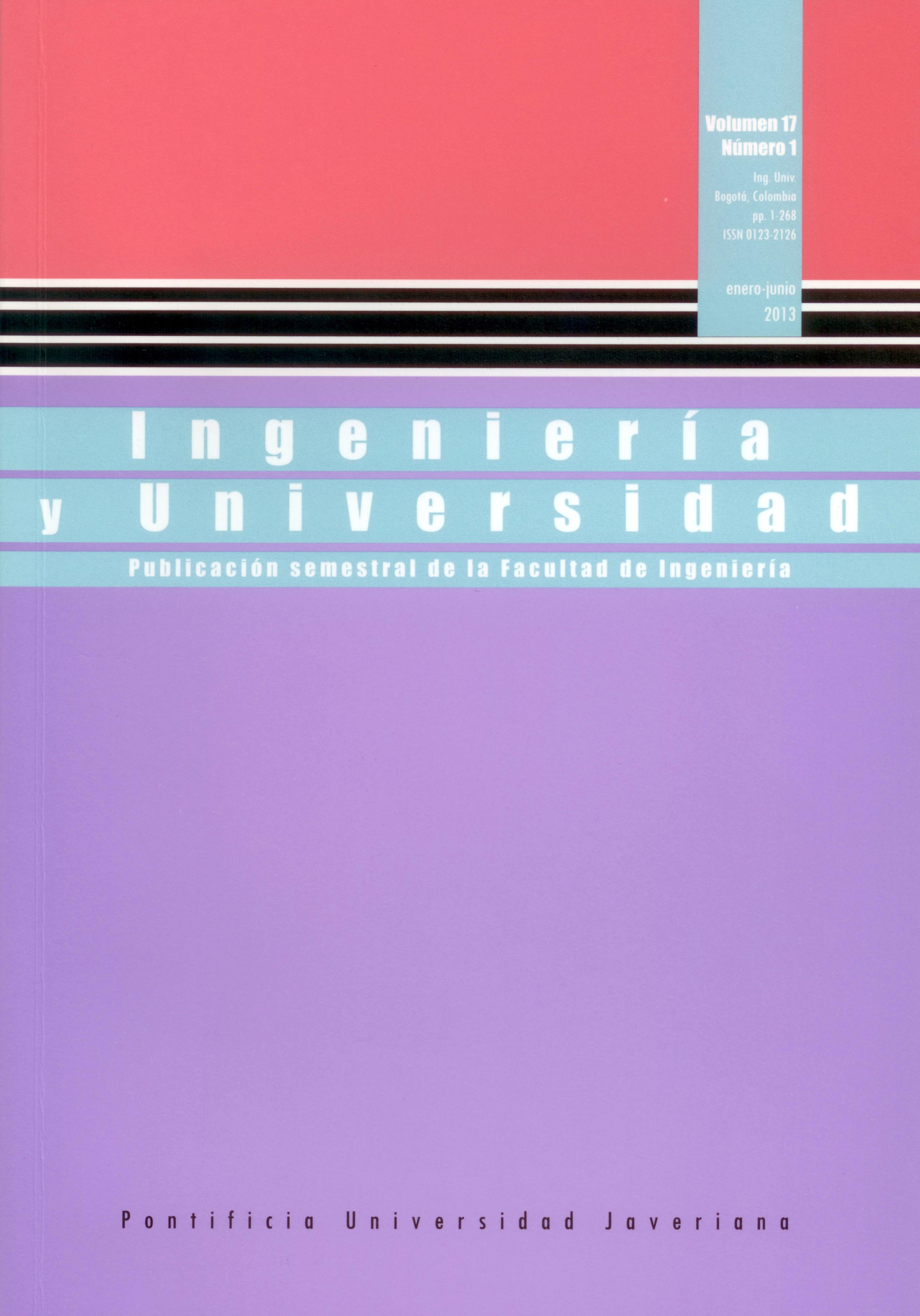Resumen
Este artículo propone un nuevo modelo matemático para asignar proyectos a empleados. El problema consiste en encontrar una óptima asignación de proyectos que equilibre la carga de trabajo y evite problemas de insatisfacción y bajo desempeño, debido a sobrecarga o cambios bruscos de carga de trabajo. Se emplea una prueba de hipótesis basada en el experimento de Bernoulli normalizado, para comparar estadísticamente las asignaciones generadas por el modelo propuesto con los obtenidos por el modelo de Zhirong Liang, Songshan Guo, Yanzhi Li y Andrew Lim, en el cual se minimiza la diferencia entre la máxima y mínima carga de trabajo asignada. Como resultado se obtuvo que las asignaciones, producto de los dos modelos no coincide en el 90 % o más de las ocasiones. Además, se encontró que los valores de las funciones objetivo, hallados a partir de las soluciones arrojadas por el modelo existente, nunca fueron mejores que los obtenidos por el modelo propuesto.
DÍAZ, J. A. y FERNÁNDEZ, E. A tabu seach heuristic for the generalized assignment problem. European Journal of Operational Research. 2001, vol. 132, pp. 22-38.
FRANZ, L. S. y MILLER, J. L. Scheduling medical residents to rotations: Solving the largescale multiperiod staff assignment problem. Operations Research. 1993, vol. 41, núm. 2, pp. 269-279.
LARUSIC, J. y PINNEN, A. P. The balanced traveling salesman problem. Computers & Operations Research. 2011, vol. 38, pp. 868-875.
LIANG, Z.; GUO, S.; LI, Y. y LIM, A. Balancing workload in project assignment. Advances in Artificial Intelligence. 2009, vol. 5866, pp. 91-100.
MARTELLO, S.; PULLEYBLANK, W. R.; TOTH, P. y DE WERRA, D. Balanced optimization problems. Operations Research Letters. 1984, vol. 3 núm. 5, pp. 275-278.
MATEUS MAHIQUES, J.; SIRVENT PRADES, R. y SAGASTA PELLICER, S. Manual de control estadístico de calidad: teoría y aplicaciones. Valencia: Universidad Jaume, 2006.
PENTICO, D. W. Assignment problems: A golden anniversary survey. European Journal of Operational Research. 2007, vol. 176, núm. 2, pp. 774-793.
PRAT BARTES, A.; TORT-MORTORELL LLABRÉS, X.; GRIMA CINTAS, P. y POZUETA FERNÁNDEZ, L. Métodos estadísticos de control y mejora de la calidad. México: Alfaomega, 2000.
ROSS, G. T. y SOLAND, R. M. A branch and bound algorithm for the generalized assignment problem. Mathematical Programming. 1975, pp. 91-103.
TOPALOGLU, S. y OZKARAHAN, I. A constraint programming-based solution approach for medical resident scheduling problems. Computers & Operations Research. 2011, vol. 38, pp. 246-255.
Una vez aceptado un trabajo para publicación la revista podrá disponer de él en toda su extensión, tanto directamente como a través de intermediarios, ya sea de forma impresa o electrónica, para su publicación ya sea en medio impreso o en medio electrónico, en formatos electrónicos de almacenamiento, en sitios de la Internet propios o de cualquier otro editor. Este uso tiene como fin divulgar el trabajo en la comunidad científica y académica nacional e internacional y no persigue fines de lucro. Para ello el autor o los autores le otorgan el permiso correspondiente a la revista para dicha divulgación mediante autorización escrita.
Todos los articulos aceptados para publicación son sometidos a corrección de estilo. Por tanto el autor /los autores autorizan desde ya los cambios sufridos por el artículo en la corrección de estilo.
El autor o los autores conservarán los derechos morales y patrimoniales del artículo.


